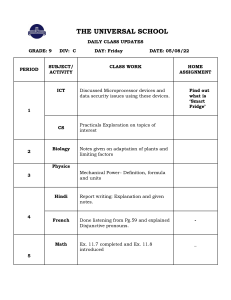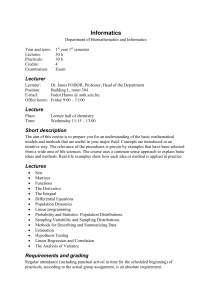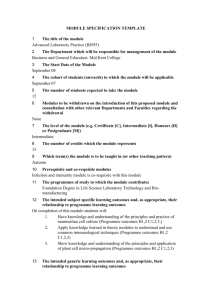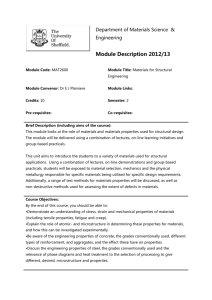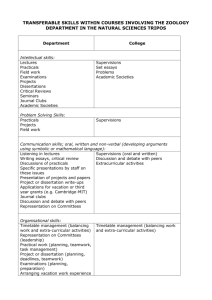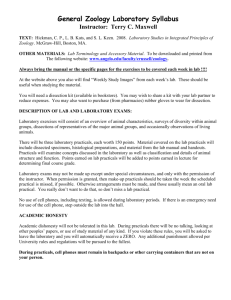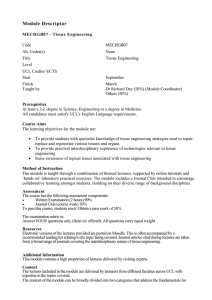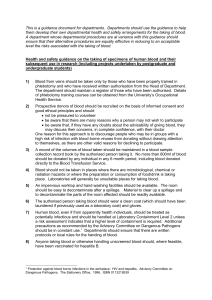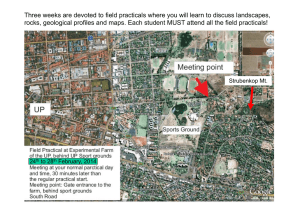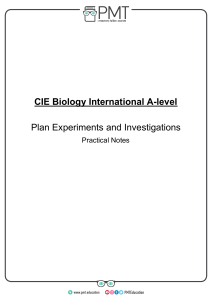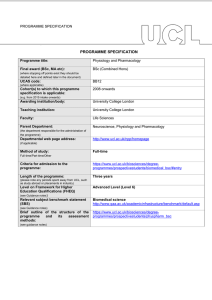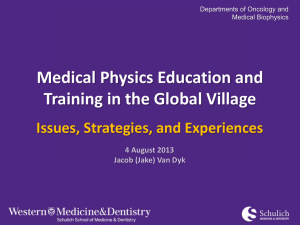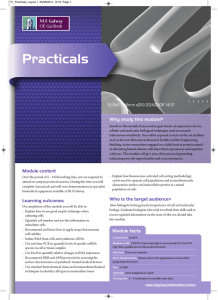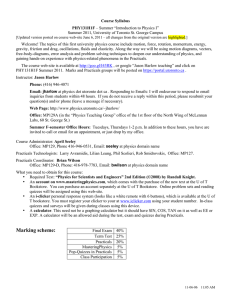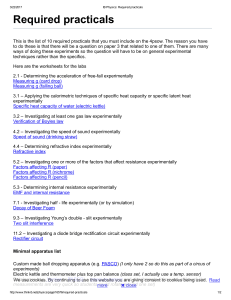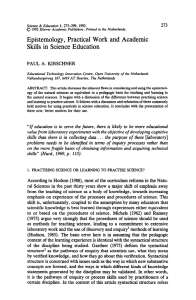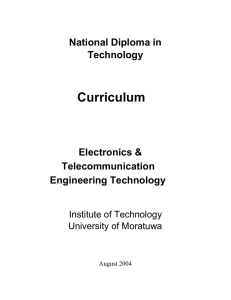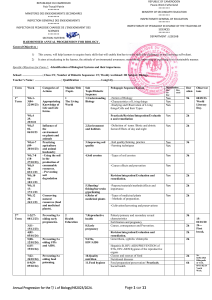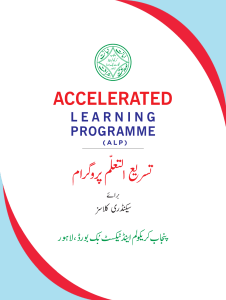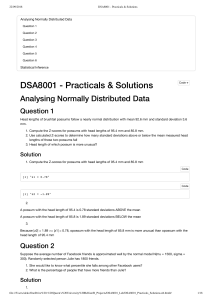KEEPING THE MOMENTUM STATISTICS LECTURES FOR NON-STATISTICIANS
advertisement
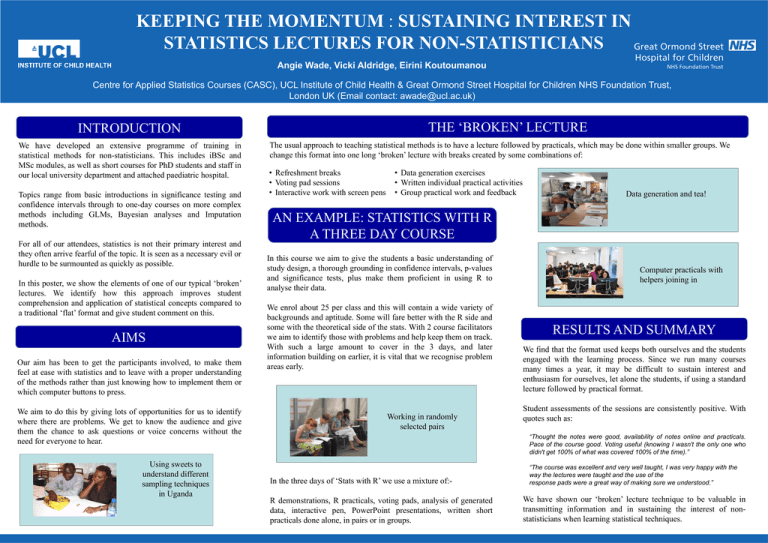
KEEPING THE MOMENTUM : SUSTAINING INTEREST IN STATISTICS LECTURES FOR NON-STATISTICIANS Angie Wade, Vicki Aldridge, Eirini Koutoumanou Centre for Applied Statistics Courses (CASC), UCL Institute of Child Health & Great Ormond Street Hospital for Children NHS Foundation Trust, London UK (Email contact: awade@ucl.ac.uk) THE ‘BROKEN’ LECTURE INTRODUCTION We have developed an extensive programme of training in statistical methods for non-statisticians. This includes iBSc and MSc modules, as well as short courses for PhD students and staff in our local university department and attached paediatric hospital. Topics range from basic introductions in significance testing and confidence intervals through to one-day courses on more complex methods including GLMs, Bayesian analyses and Imputation methods. For all of our attendees, statistics is not their primary interest and they often arrive fearful of the topic. It is seen as a necessary evil or hurdle to be surmounted as quickly as possible. In this poster, we show the elements of one of our typical ‘broken’ lectures. We identify how this approach improves student comprehension and application of statistical concepts compared to a traditional ‘flat’ format and give student comment on this. AIMS Our aim has been to get the participants involved, to make them feel at ease with statistics and to leave with a proper understanding of the methods rather than just knowing how to implement them or which computer buttons to press. We aim to do this by giving lots of opportunities for us to identify where there are problems. We get to know the audience and give them the chance to ask questions or voice concerns without the need for everyone to hear. Using sweets to understand different sampling techniques in Uganda The usual approach to teaching statistical methods is to have a lecture followed by practicals, which may be done within smaller groups. We change this format into one long ‘broken’ lecture with breaks created by some combinations of: • Refreshment breaks • Voting pad sessions • Interactive work with screen pens • Data generation exercises • Written individual practical activities • Group practical work and feedback Data generation and tea! AN EXAMPLE: STATISTICS WITH R A THREE DAY COURSE In this course we aim to give the students a basic understanding of study design, a thorough grounding in confidence intervals, p-values and significance tests, plus make them proficient in using R to analyse their data. We enrol about 25 per class and this will contain a wide variety of backgrounds and aptitude. Some will fare better with the R side and some with the theoretical side of the stats. With 2 course facilitators we aim to identify those with problems and help keep them on track. With such a large amount to cover in the 3 days, and later information building on earlier, it is vital that we recognise problem areas early. Working in randomly selected pairs Computer practicals with helpers joining in RESULTS AND SUMMARY We find that the format used keeps both ourselves and the students engaged with the learning process. Since we run many courses many times a year, it may be difficult to sustain interest and enthusiasm for ourselves, let alone the students, if using a standard lecture followed by practical format. Student assessments of the sessions are consistently positive. With quotes such as: “Thought the notes were good, availability of notes online and practicals. Pace of the course good. Voting useful (knowing I wasn't the only one who didn't get 100% of what was covered 100% of the time).” In the three days of ‘Stats with R’ we use a mixture of:R demonstrations, R practicals, voting pads, analysis of generated data, interactive pen, PowerPoint presentations, written short practicals done alone, in pairs or in groups. “The course was excellent and very well taught, I was very happy with the way the lectures were taught and the use of the response pads were a great way of making sure we understood.” We have shown our ‘broken’ lecture technique to be valuable in transmitting information and in sustaining the interest of nonstatisticians when learning statistical techniques.
